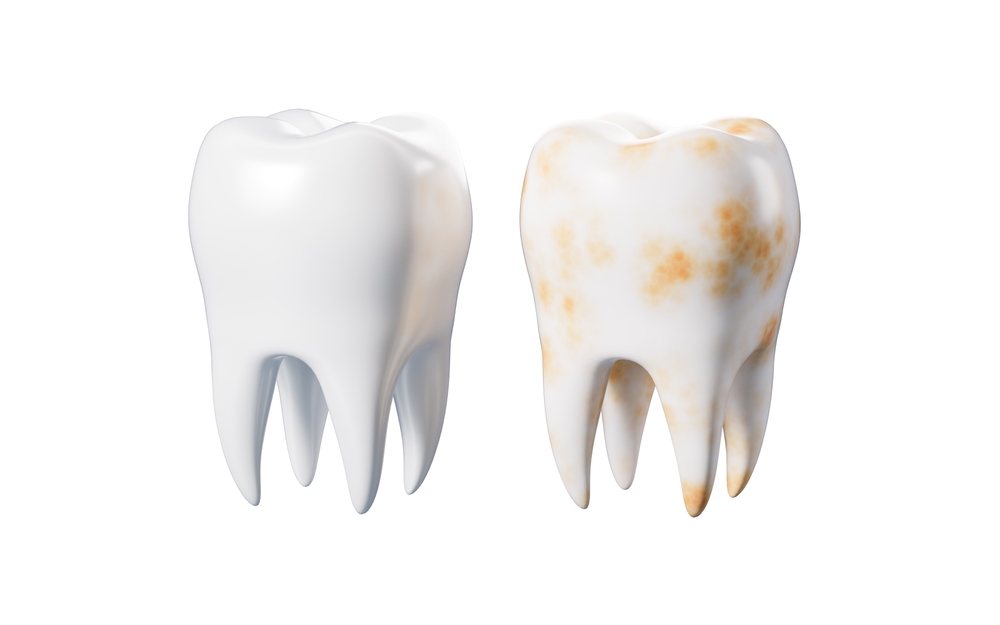
Stains on Children’s Teeth – Causes and Treatments
It can be worrying for parents to notice stains on their child’s teeth. Staining can happen for many reasons, and not all of them point to poor brushing or cavities. Some stains are caused by foods or drinks, while others can come from minerals, medications, or even bacteria in the mouth.
Understanding where stains come from helps you take the right steps to manage them. This article explains the common causes of tooth discolouration in children and the treatment options that can keep their smile clean and healthy.
Intrinsic vs Extrinsic Stains
Stains on teeth fall into two categories: intrinsic and extrinsic. Understanding the difference can help you figure out what’s causing the discolouration and what type of treatment may work best.
Extrinsic stains sit on the surface of the teeth. These usually come from things your child eats or drinks, such as tea, curry, or foods with strong colouring. Iron supplements and chlorine in swimming pools can also lead to surface stains. In many cases, these can be removed with regular brushing or a professional cleaning at the dentist.
Intrinsic stains come from inside the tooth. These may develop because of injury, certain medications, or conditions that affect how the enamel forms. For example, a child whose mother took tetracycline antibiotics during pregnancy may have teeth that appear dark or grey. Intrinsic stains don’t respond to brushing or cleaning and often need more involved treatments, like bonding or crowns.
By knowing whether the stain is on the outside or inside of the tooth, you can better understand what steps to take next.
Extrinsic Causes of Tooth Stains
Extrinsic stains appear on the surface of your child’s teeth and often come from things they eat, drink, or come into contact with during daily activities. These stains are usually easier to remove and do not affect the tooth structure. Most of the time, they can be managed at home or with help from a dentist.
Dietary Choices
Some foods and drinks can leave colour behind on the teeth.
- Turmeric and curry contain strong pigments that can yellow the teeth.
- Tea, depending on how often it’s consumed, can stain the teeth due to natural substances in the leaves.
Treatment
These types of stains often come off with regular brushing. If they don’t, a dental cleaning can remove them safely without harming the teeth.
Chromogenic Bacteria
Certain bacteria in the mouth can produce dark-coloured waste that sticks to teeth. This often shows up as dark or orange stains, especially near the gum line.
Treatment
These stains do not usually respond to brushing alone. A professional dental cleaning will remove them. Regular brushing and flossing can help prevent the bacteria from coming back.
Swimming in Chlorinated Pools
If your child spends a lot of time in pools, chlorine in the water can sometimes cause a greenish tint on their teeth. This happens more often with frequent swimmers.
Treatment
These surface stains usually come off during a dental cleaning. You don’t need to stop swimming, but rinsing your child’s mouth with fresh water after swimming can help reduce staining.
Iron Supplements
Liquid iron supplements can cause brownish stains on baby teeth. These are common in children who take iron to treat low iron levels.
Treatment
Although these stains look concerning, they sit on the surface and do not damage the tooth. A dentist can remove them during a routine cleaning.
By spotting the cause of surface stains early, you can help your child keep their smile looking healthy and clean. If stains don’t go away with brushing, a visit to the dentist is the next step.
Intrinsic Causes of Tooth Stains
Intrinsic stains come from inside the tooth and often develop during early stages of tooth formation. These stains usually don’t respond to brushing or regular cleanings. Unlike surface stains, they often need dental treatment to improve the appearance of the tooth.
Trauma
An injury to a baby tooth can damage the blood vessels inside, leading to darkening of the tooth.
This can happen after a fall or bump to the mouth, even if the tooth doesn’t feel loose or painful.
Treatment
If the tooth isn’t infected or painful, your dentist may recommend leaving it alone and watching for changes. In some cases, cosmetic treatments like bonding may help with appearance. If there’s damage to the nerve or signs of infection, the dentist may need to treat or remove the tooth.
Antibiotics
Exposure to certain antibiotics during pregnancy can affect how a child’s baby teeth form.
The antibiotic tetracycline is known to cause grey or brown discolouration if taken during pregnancy or early childhood.
Treatment
These stains are permanent, but dentists can improve appearance with cosmetic options such as bonding, veneers, or crowns, depending on the child’s age and the severity of staining.
Genetic Conditions
Some children are born with conditions that affect the way their enamel forms.
Amelogenesis imperfecta is one example where the enamel is weak, thin, or missing entirely. This makes teeth more likely to appear yellow or brown and more likely to stain.
Treatment
Amelogenesis imperfecta cannot be fully cured and usually requires ongoing care. Dentists often use fluoride treatments, special toothpaste, and protective coverings like crowns to manage the condition and help keep the teeth strong and comfortable over time.
While intrinsic stains can’t be brushed away, your child’s dentist can suggest safe and effective ways to manage them. If you notice dark or unusual colouring that doesn’t go away, booking an exam will help guide the next steps.
Kids Dental Group Can Help with Tooth Stains
If you’ve noticed stains on your child’s teeth and aren’t sure what’s causing them, our team at Kids Dental Group can help. We’ll examine your child’s teeth, explain what’s going on, and recommend the best way to manage or treat the discolouration. Whether it’s something simple or needs more attention, we’re here to guide you through it with care and clarity.
